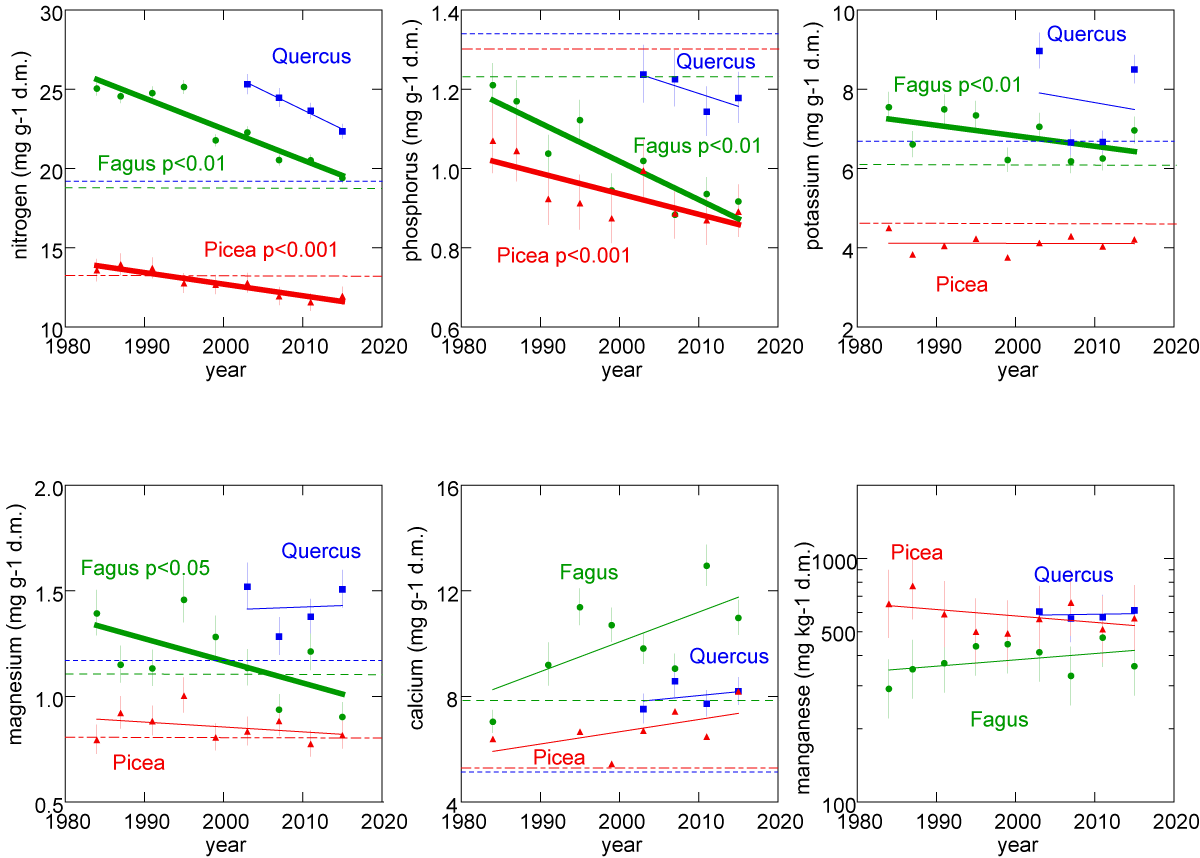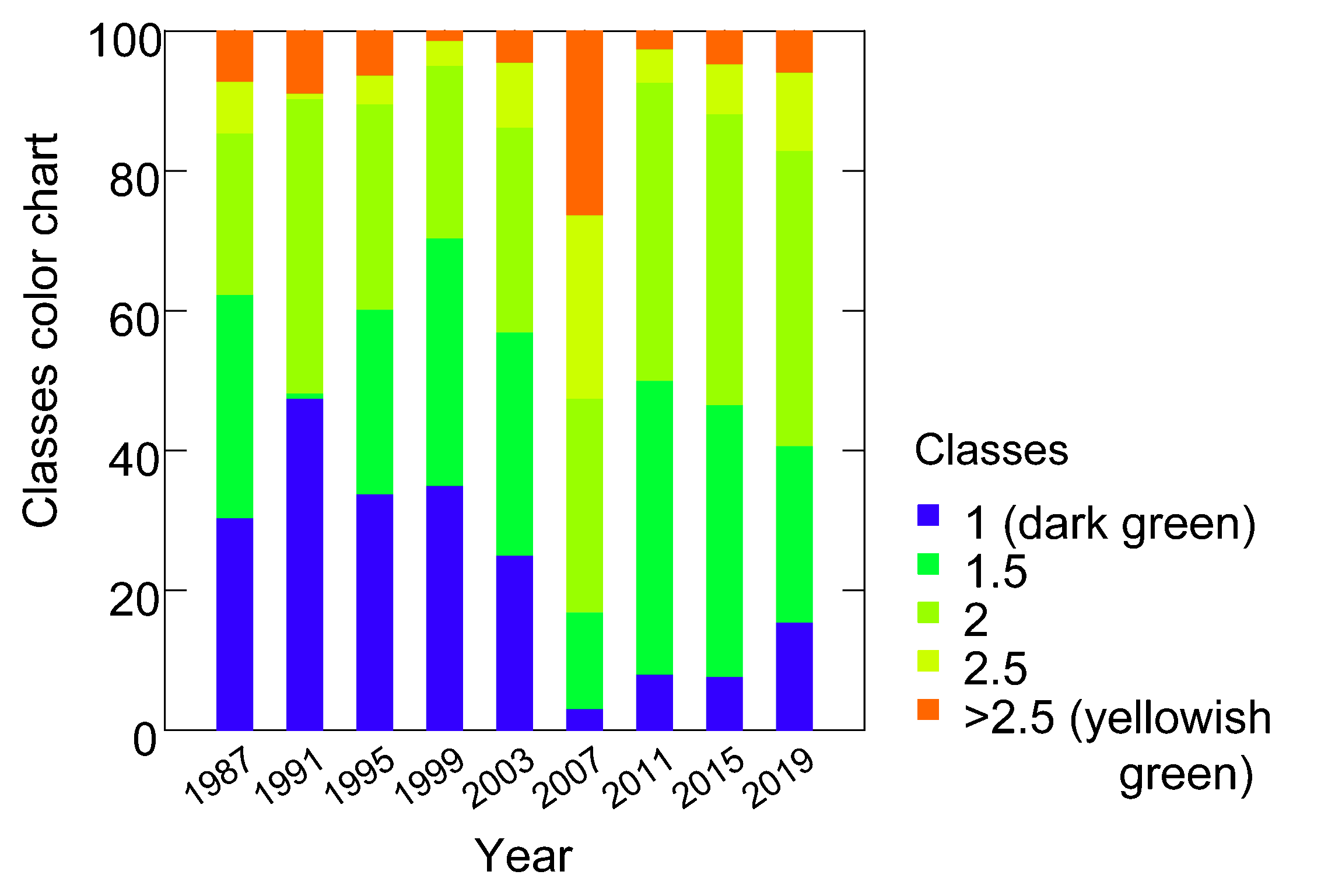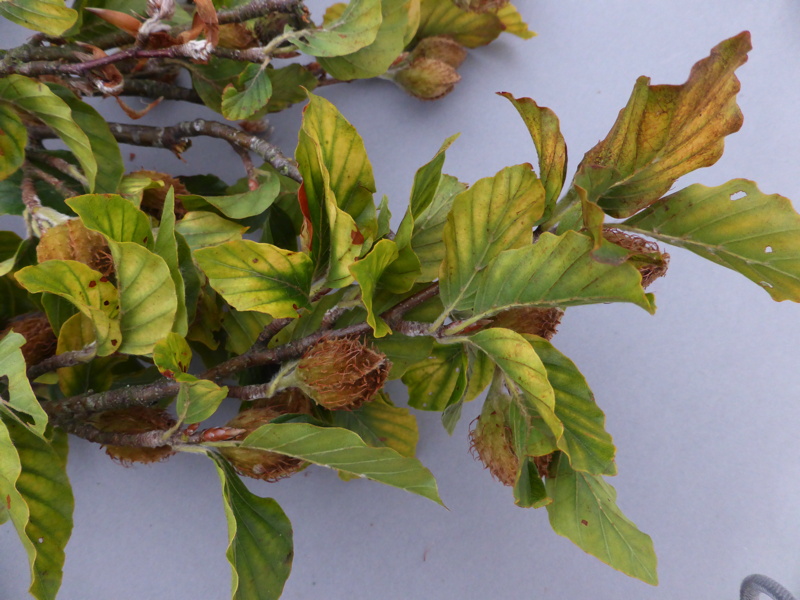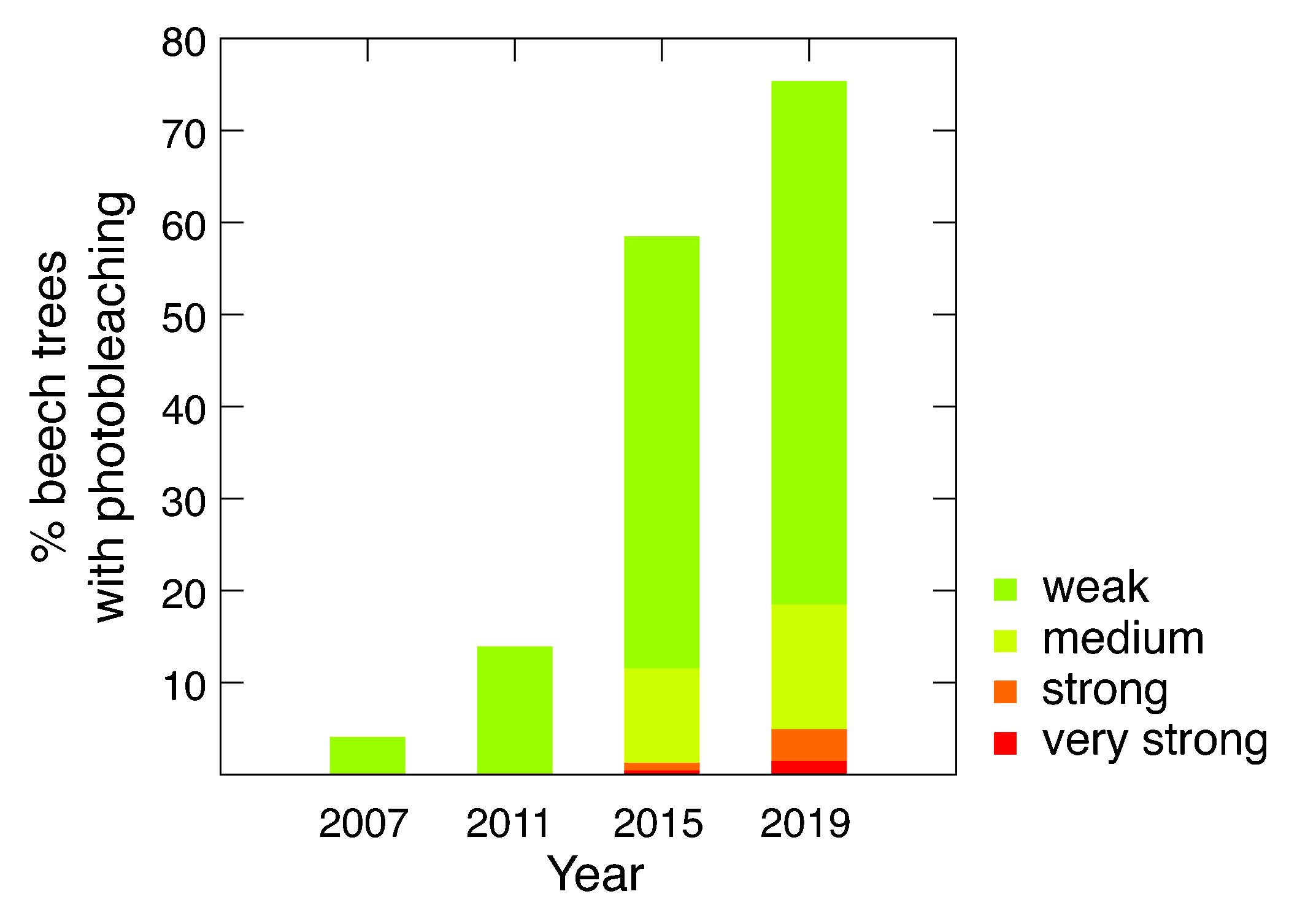Nutrient supply
Foliar mineral nutrients are in perfect balance in healthy trees. During the monitoring of more than 3 decades we observed a constant decrease of the foliar concentrations on nitrogen, phosphorus (beech and Norway spruce), potassium and magnesium (beech only) . In 1984, phosphorus deficiency was recorded in 9%, in 2003 in 80% and in 2015 in 95% of the beech plots. In the same years, magnesium deficiency was recorded in 11%, 40% and 75% of the beech plots, respectively.

Trends of nutrient concentrations in beech and spruce plots. Dashed lines indicate thresholds for sufficient supply
based on Mellert and Göttlein 2011.
The observed trends in foliar nutrients can be related to soil acidification, nitrogen deposition, ozone pollution and drought stress. These factors change the status of forest soil where tree roots take up nutrients. You will find more information on this topic in the section “Why is our forest stressed?”.
The increasing nutrient deficiency manifests itself as a change in leaf colour or, in the case of magnesium, as an increase in discolouration between the leaf veins (intercostal chlorosis). Photobleaching caused by sun irradiation is more frequent in phosphorus deficient trees. It is, however not a typical symptom of nutrient deficiency.


The trends of leaf colour (left) and intercostal chlorosis (right).


Left: Colour changes in beech leaves due to strong intercostal chlorosis that is caused by
magnesium deficiency (0.28mg Mg per g dry matter).
Right: Spruce needles become yellow due to potassium deficiency (0.25mg K per g dry matter).


Left: The amount of leaves with photobleaching increased strongly in the last few years.
Right: Beech leaf with strong discoloration due to photobleaching.

